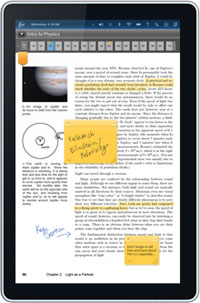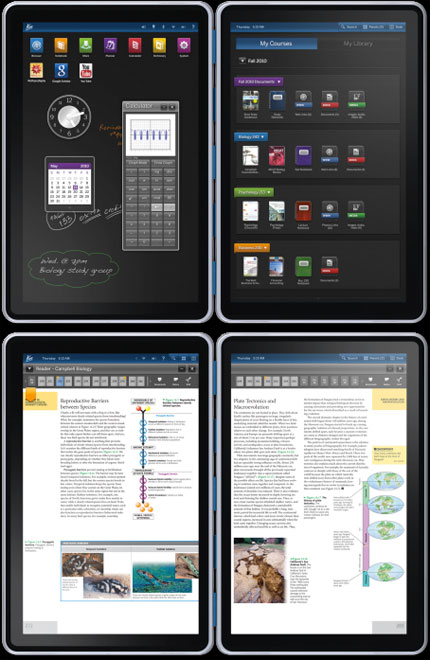Kno E-Reader Tablets To Start at $599

The single-screen version of the Kno will run $599 when it debuts this year. The dual-screen model, below, will run $899. |
Kno Inc. said Monday night that it is now accepting preorders for its first generation single- and dual-screen electronic textbook readers. The tablets will initially run $599 for the single-screen model and $899 for the dual-screen model and are expected to be delivered, at least to some customers, by the end of the year.
The Kno tablets are purpose-built for education. They incorporate a range of open standards and are powered by the WebKit browser engine. (The company said that coding apps for Kno will be as simple as building a Web site.) The tablets made their formal debut in June 2010 in the dual-screen configuration and went into beta testing with higher education students this fall using software from education publishers Cengage Learning, McGraw-Hill Education, Pearson, and Wiley. The single-screen version was announced in late September.
Kno devices sport one or two 14.1-inch, 1,440 x 900-pixel touchscreens and can display full-scale textbooks, videos, and other multimedia. They also support notetaking, educational apps, Web browsing, and content sharing.
Other features (known at this time) include:
- Data backup and synchronization in the cloud;
- Support for open and proprietary Web standards, including Flash, JavaScript, and HTML5 technologies;
- Support for both handwriting (stylus and touch) and keyboard input;
- Features for highlighting text and appending stick notes within textbook pages;
- APIs targeted toward education development;
- Multitasking; and
- Long battery life (up to a "full day on campus," the company said).
 |
One beta tester shared her experience with the Kno tablet in a statement released by the company Monday: "My experience with Kno has been really incredible. My books have become more interactive and the ability to hand-write electronic notes on the book pages themselves has changed how I retain information," said Melissa Lin, a sophomore at University of California, Berkeley. "I see a ton of difference with the Kno. I can carry everything with me including my books, my notebooks and a browser for research. And, with the lower cost of digital textbooks, it will pay for itself in three semesters which is really great."
Kno said the new models will ship by the end of the year. A limited number of preorders are available now. Further information can be found here.